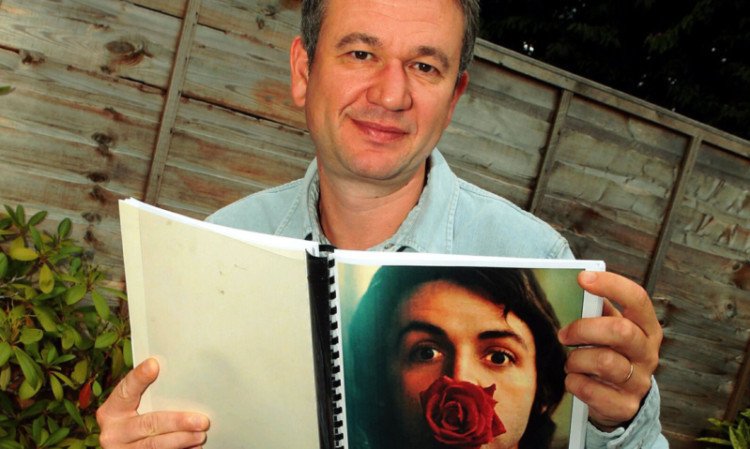A Dundonian journalist and author has filed the biggest scoop of his career with the publication of a new book on the most famous musician on the planet.
Tom Doyle’s new book, Man On The Run: Paul McCartney in the 1970s, is published today.
It’s a fascinating look at how McCartney coped with life in the aftermath of the break-up of the biggest band ever.
Much of the information is gleaned from the many interviews Tom had with McCartney.
“Not bad for a wee boy from Dundee,” Tom said as he described how the book came about. “I first interviewed him in 2006 for the 20th anniversary of Q Magazine. We were talking about the last 20 years and what had happened. He was great but he was distracted and he kept looking at his watch.
“I wondered what was going on but two days later his divorce was announced. I was nervous to meet him at first but I decided to go in next time and be a bit cheeky. I was worried because he could have taken it the wrong way but then he was laughing. He’s a working-class dude after all and he reacted well to it.
“We were talking about the seventies and I said to him, ‘you were like Pete Doherty, the cops were busting you left, right and centre then’.
“He thought it was funny and because that went well I started interviewing him one or twice a year, usually phone interviews to America.
“I looked after him at the Q Awards one year and because of that I started getting on very well with him.
“A lot of books about him and the Beatles were very reverential and I didn’t treat him like that. I wanted something people would really enjoy reading.”
Tom, 41, who was educated at Morgan Academy, previously wrote The Glamour Chase, his biography of Dundee musician Billy MacKenzie.
“I always fancied doing another book and Billy was a hard act to follow, so I needed a Beatle,” he said.
“The idea for the book came from talking about the 1970s where he was seen as being nicey nicey.
“He said it was almost like having a nervous breakdown at the time. He was really an outlaw hippy millionaire, travelling a lot between Nigeria, Scotland and America.
“I had interviewed him a lot but I needed two or three more interviews to get it going but it didn’t happen.
“Then, as it turned out, I have done two or three more interviews with him this year so that sorted it. I was back in Dundee one time. I was speaking to my dad about it and he said, ‘I took your mother to see the Beatles at the Caird Hall in 1963 and we couldn’t hear a thing for screaming women, get him down here, I want my money back or he’s got to sing me She Loves You!’
“It is an unauthorised book, but I sent a synopsis to get it approved and they approved the cover picture and sent me more, so I assume he didn’t disapprove of it.
“I used the interviews as a basis for the book. It was often a bit weird because he sometimes talked about both the Beatles and himself in the third person.
“I’ve dedicated it to my dad, Thomas Corrigan Doyle, who still lives in Dundee.
“Because I was obsessed with The Beatles, he gave me my first record player so I could play the Beatles singles on it.”
Man On The Run: Paul McCartney in the 1970s, is published today by Polygon in the UK and Random House in America.
